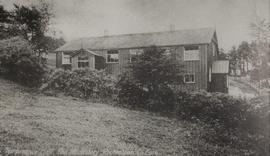Following the deaths in exile of Fr. Albert Bibby OFM Cap. (d. 1925) and Fr. Dominic O’Connor OFM Cap. (d. 1935), there were numerous calls to have their bodies returned to Ireland. Prominent republican supporters in the United States and Old IRA men in Ireland frequently petitioned ecclesiastical authorities to have the bodies of the ‘two patriot priests’ repatriated. These calls were initially rejected, and the outbreak of the Second World War prompted a postponement of the campaign. In 1954, a repatriation committee was set up by Cork No. 1 Brigade of the Old IRA to collect the funds necessary to defray the expenses involved in returning the remains to Ireland. Florence O’Donoghue, head of intelligence for the Cork Brigade during the War of Independence, was appointed Honorary Secretary. Cornelius Neenan was appointed the Committee’s representative in the United States. Aside from the financial difficulties, the Committee also had to contend with a certain reluctance on behalf of the church authorities in having the bodies of two priests moved in such an overtly public manner. The reburial was a departure from the normal rule of the Capuchin Franciscan Order. Also, as they were priests, a high religious content would have to be included in any civil ceremonies connected with the repatriation. Having at length gained the approval of both the state and the church, the repatriation took place in 1958. On 13 June, the priests’ remains arrived at Shannon Airport to be greeted by Seán T. O’Kelly, President, Ėamon de Valera, Taoiseach, Fr. Hilary McDonagh OFM Cap., Capuchin Vicar Provincial, and many representatives of the Old IRA. The funeral cortege then proceeded to Cork for a requiem mass in Holy Trinity Capuchin Church. Fr. Albert and Fr. Dominic were interred in the cemetery attached to Rochestown Capuchin Friary on 14 June 1958. The sub-series consists of correspondence, newspaper clippings, printed ephemera and photographs connected with the reparation campaign and ceremony in 1958. The series also includes records relating to the unveiling of a memorial to the two priests on the grounds of the Capuchin Friary in Raheny, Dublin, by veterans of Fianna Éireann in 1959.

